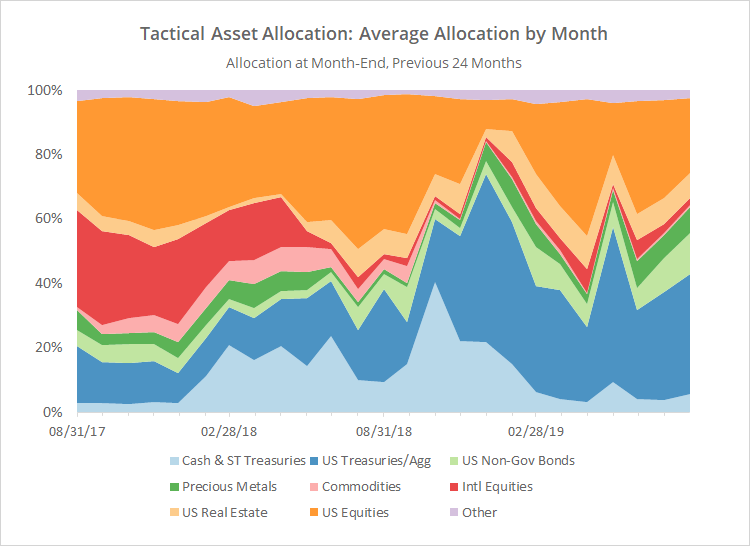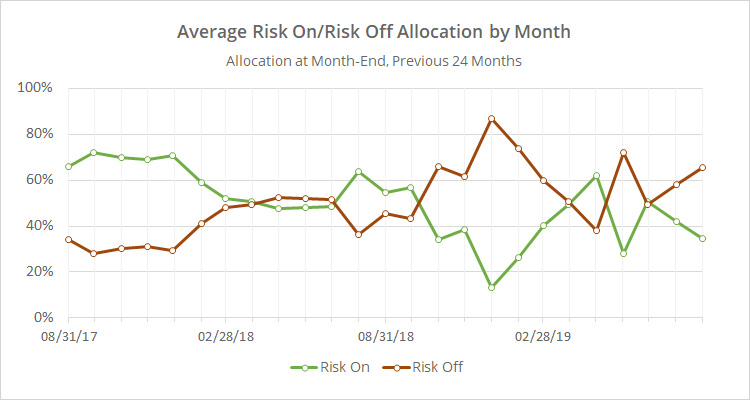This is a summary of the recent performance of a wide range of excellent Tactical Asset Allocation (TAA) strategies, net of transaction costs. These strategies are sourced from books, academic papers, and other publications. While we don’t (yet) include every published TAA model, these strategies are broadly representative of the TAA space. Learn more about what we do or let AllocateSmartly help you follow these strategies in near real-time.
Commentary:
 Tactical Asset Allocation did what it was designed to do by sidestepping the market weakness in August. All but 8 of the strategies that we track outperformed the 60/40 benchmark.
Tactical Asset Allocation did what it was designed to do by sidestepping the market weakness in August. All but 8 of the strategies that we track outperformed the 60/40 benchmark.
One month ago, at the end of July, we wrote that TAA had grown more defensive, despite broad market strength at the time. That preemptive move turned out to be prescient as most risk asset classes went on to fall in August.
Despite its recent success, TAA trails for the year. TAA did a good job controlling market losses in late-2018 and mid-2019, but in both cases, those losses proved to be short-lived and TAA was positioned too defensively for the subsequent market rebound.
To some degree, this is the price of doing business for trend-following/momentum types of strategies. At some point, TAA’s cautious nature is going to save the portfolio from significant loss (ex. 2000-02 and 2007-08), but in the meantime, that risk adversity makes TAA prone to getting stuck on the sidelines when those losses don’t develop.
Time will tell whether August’s weakness continues to spread or if this is another blip on the radar. As expected, TAA has continued to increase exposure to defensive assets. If the market recovers in September, we would expect TAA to underperform, but if this market weakness continues, TAA should be well positioned to weather the storm.
Data dump:
With such a large pool of published strategies to draw on (53 and counting), we’re able to draw some broad conclusions about the state of TAA. The following two charts help to show trends in the asset classes that TAA as a whole is allocating to over time.
The first chart shows the average month-end allocation to categories of assets by all of the strategies that we track. For example, “US Equities” may include everything from the S&P 500 to individual stock market sectors. Defensive assets tend to be at the bottom of the chart, and offensive at the top. The data on the far right of the chart reflects where TAA stood as of the end of the most recent month.
The biggest shift in allocation was out of US equities (-7%), and into US Treasuries and other defensive assets.
In the second chart below, we’ve combined average TAA allocation into even broader categories: “risk on” (equities, real estate and high yield bonds) versus “risk off” (everything else). We realize that some asset classes don’t fit neatly into these buckets, but it makes for a useful high level view.
We invite you to become a member for about a $1 a day, or take our platform for a test drive with a free limited membership. Put the industry’s best tactical asset allocation strategies to the test, combine them into your own custom portfolio, and then track them in near real-time. Have questions? Learn more about what we do, check out our FAQs or contact us.

